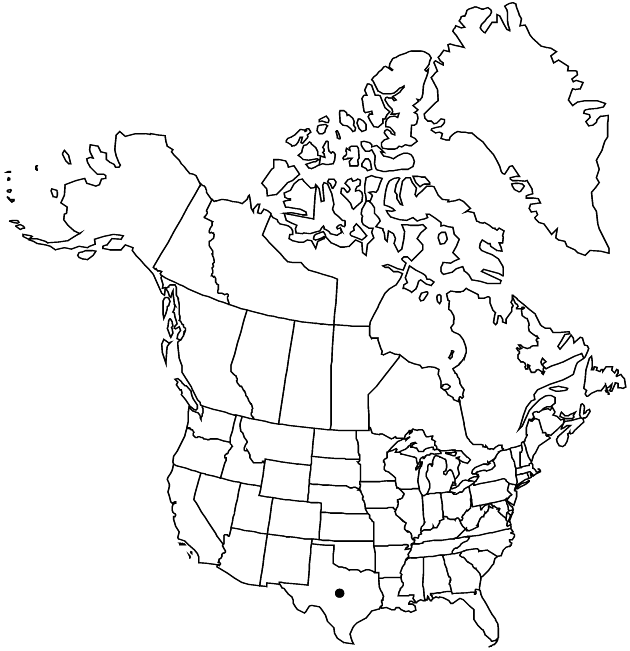Perityle dissecta
in A. Gray et al., Syn. Fl. N. Amer. 1(2): 320. 1884.
Perennials or subshrubs, 7–20 cm (densely leafy); pilose. Leaves: petioles (3–)4–10 mm; blades lanceolate to deltate, 4–15 × 4–15 mm, usually 1–3-pinnately divided, lobes irregular, rounded, ultimate margins laciniate. Heads borne singly or in corymbiform arrays, 8–10 × 4–5 mm. Peduncles 2–8(–17) mm. Involucres campanulate. Phyllaries 12–15, linear to linear-lanceolate, (5–)7–13 × 0.5–0.9 mm (apices usually attenuate, sometimes acute). Ray florets 0. Disc florets 20–30; corollas yellow, tubes 1–1.5 mm, throats usually narrowly tubular, (2–)2.5–2.8 mm, lobes 0.7–1 mm. Cypselae oblong to narrowly oblanceolate, (2.8–)3–3.8 mm, margins moderately calloused, short-hairy; pappi 0, or of 1(–4) moderately stout bristles (1–)2.2–3 mm. 2n = 34, 68.
Phenology: Flowering spring–fall.
Habitat: Limestone walls of canyons
Elevation: 800–1200 m
Distribution

Tex., Mexico (Chihuahua).
Discussion
Of conservation concern.
Perityle dissecta occurs in southern Brewster and Presidio counties. It and P. lemmonii have been considered conspecific by some taxonomists because of similarities in gross leaf morphology. The differences in phyllaries, disc corollas, and pappus bristles, as well as distinct distributions, support recognizing them as separate species.
Selected References
None.